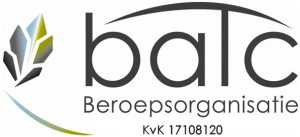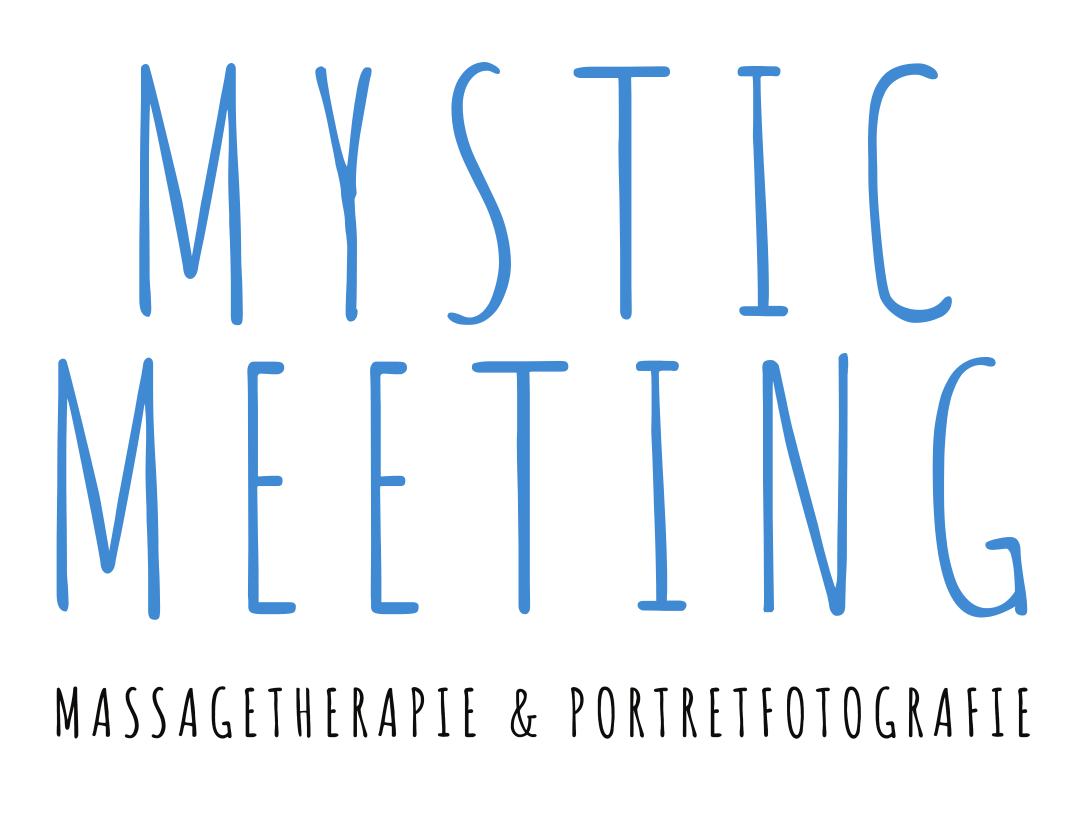This therapy focuses on recognizing, exploring, and regulating physical tension, emotional blockages, and psychosomatic complaints.
Talking techniques are combined with massage, acupressure, shiatsu, focusing, breathwork, and insights from Eastern element theory. The body serves as a gateway to deeper layers of consciousness and emotional processing.
This approach supports the development of self-awareness, resilience, and mental well-being, and helps restore physical and emotional imbalances by reconnecting to the natural harmony between body and mind.
Common themes and support questions:
Stress & fatigue.
Stuck emotions.
Physical complaints without a clear cause.
Difficulty feeling or setting boundaries.
Recovery after impactful experiences.
Strengthening self-confidence and body awareness.
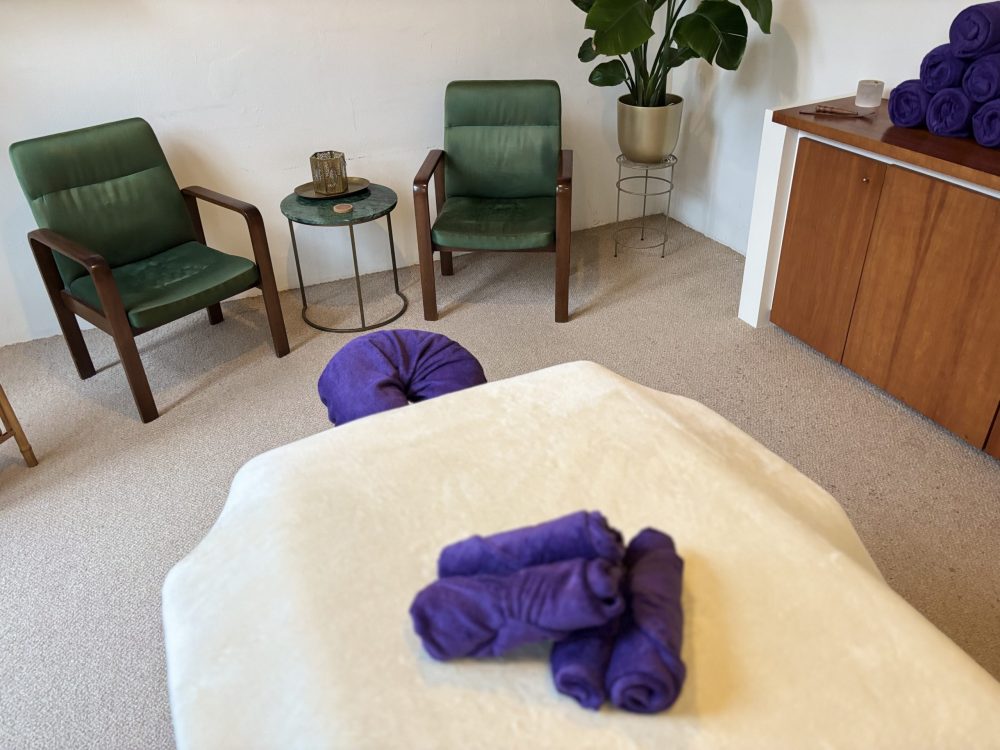
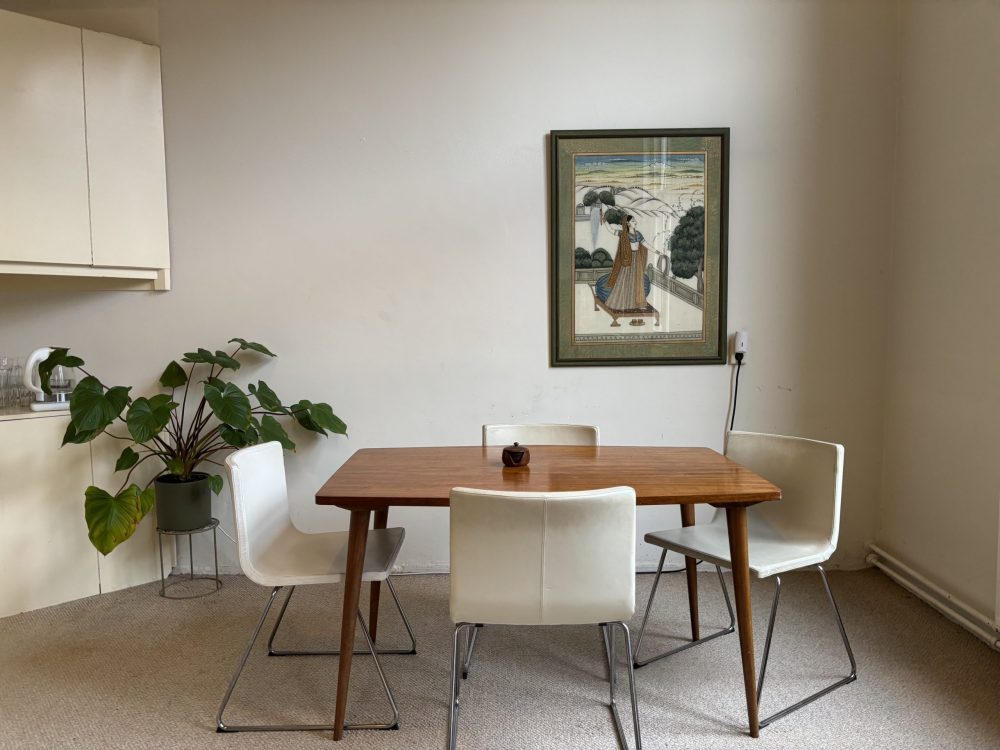
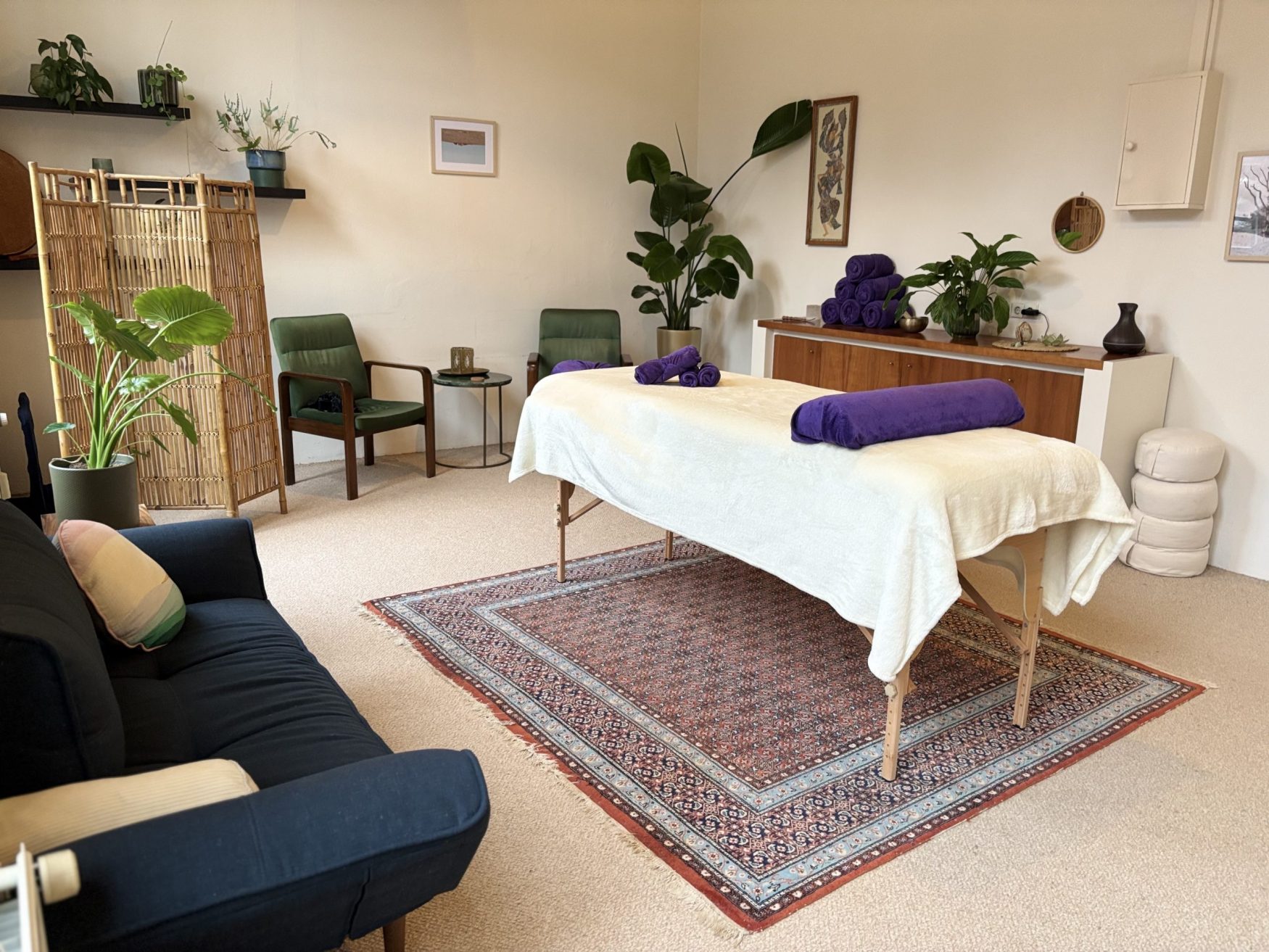
METHODS
The treatments combine various body-oriented methods, tailored to your themes and personal preferences.
Acupressure
Acupressure is an ancient technique that stimulates or calms acupressure points, activating the body’s self-healing ability. This helps restore balance on a physical, mental, and emotional level.
The acupressure points are located on meridians – energy pathways that transport vital energy (Qi) throughout the body. When this flow is disrupted, imbalance can occur. Meridians correspond to major nerves and play an essential role in the body’s energy supply.
View on Health
According to Taoist philosophy, health is based on the free flow of Qi and a balance between body, mind, and soul. Organs, emotions, and thoughts are inextricably linked, just as humans are connected to their environment.
Traditional Chinese Medicine (TCM) offers a holistic approach to well-being and includes Qi Gong, breathing exercises, meditation, nutritional therapy, herbs, acupuncture, acupressure, massage techniques, and moxa.
Zen Shiatsu
Shiatsu shares the principles and meridians of acupressure but has its own approach with a broader focus on the meridians, rather than specific pressure points.
In the Zen Shiatsu method, gentle stretches and pressure are applied using fingers, thumbs, hands, elbows, and knees, which I incorporate as an additional technique during massages.
The primary intention of Shiatsu is to harmonize the energy flow in the body, but it can also be specifically applied to address complaints arising from imbalance, such as stress, muscle tension, and fatigue.
The Origin
Shiatsu is derived from anma, the traditional hand-healing method. “An” means pressure, and “ma” means stroking. Anma uses techniques based on the meridians of Eastern medicine.
The Zen aspect in Zen Shiatsu refers to the practitioner’s awareness and presence. The quality of touch is not only determined by technique but also by the inner attitude, calmness, and concentration during the massage.
Eastern Elements
Eastern Elements Theory is a holistic approach to health, based on Traditional Chinese Medicine (TCM).
The five elements – Wood, Fire, Earth, Metal, and Water – correspond to organs, emotions, and seasons. They influence each other in cycles of nourishment and control, providing insight into the balance between body and mind. Each element has a specific energetic quality that affects both physical and emotional health.
Tongue and pulse diagnosis are techniques used to assess the energetic balance. The tongue reflects the condition of the organs, while the pulse shows the flow of Qi and blood, helping identify imbalances. I use these techniques as an additional tool to determine where more balance is needed in the body.
The combination of Eastern Elements Theory, Acupressure, and Shiatsu offers a powerful approach not only to treat symptoms but also to address the underlying causes of imbalance, contributing to overall well-being.
Foot Reflexology
Reflexology is based on the principle that the entire body is reflected in specific zones, such as the feet, hands, ears, or back.
By stimulating these zones with targeted pressure, bodily processes such as digestion, circulation, and lymph flow can be supported.
I integrate foot reflexology massage into my treatments as part of Embodiment Therapy. This approach promotes both physical and mental relaxation, helping the body release blockages and return to a natural state of balance.
Lymph Drainage
Manual lymphatic drainage is a gentle, rhythmic massage technique that stimulates the removal of fluid and waste through the lymphatic system. This natural defense system plays an essential role in immune protection, fluid balance, and fatty acid absorption.
By improving lymphatic circulation, this therapy supports better oxygenation of the skin, healthier digestion, detoxification of the body, and relief from swelling.
Lymphatic drainage thus aids in recovery and promotes a feeling of lightness and vitality.
Chi Nei Tsang
Abdominal massage, based on the Chi Nei Tsang method from Taoist Healing Arts, is a holistic therapy focused on activating the internal organs through deep, gentle pressure.
This stimulates blood circulation, improves the supply of oxygen and nutrients, and supports the removal of toxins through the lymphatic system.
The abdomen and pelvis are sensitive areas where not only physical tension but also unresolved emotions can be stored.
The safe and supportive environment in my practice helps to consciously experience this area, release tension, and find deep relaxation.
Deep Tissue
This massage combines deep tissue and connective tissue massage for a profound effect on muscles and connective tissue.
During the connective tissue massage, the skin is lifted and rolled using specialized techniques, stimulating blood circulation and firming the skin. Deep tissue massage focuses on the deeper muscle layers and connective tissues, helping to release built-up tension and blockages.
By combining these techniques, not only is the skin’s structure improved, but deep muscle tension is also relieved. This promotes greater flexibility, relaxation, and a faster recovery for the body.
MYSTICS
The treatments are complemented by psychosocial and psychotherapeutic techniques.
Focusing
Focusing is a psychotherapeutic technique in which you attentively listen to the subtle signals of your body. Combined with massage, this can have a profound self-reflective effect.
By becoming aware of physical sensations, feelings, and thoughts, valuable information emerges that contributes to both psychological and physical healing.
This process helps to release emotions, accept your body, and experience more balance in daily life.
Introspection
For those who wish to create more awareness and insight, I optionally offer a guided introspection session of 30 minutes before the massage.
Introspection is a form of self-reflection, in which you explore your thoughts, feelings, patterns, and desires. Through conversation, relaxation exercises, meditation, and visualization, I help you open relevant themes and mentally unwind.
The deep relaxation of the subsequent massage enhances access to your subconscious, often leading to new insights and more conscious choices in your daily life.
Inner Landscape
During a holistic treatment, you strengthen the connection with your body and learn to better understand your inner needs, desires, and boundaries.
This increases your freedom of movement within your ‘inner landscape,’ which can help balance aspects such as giving and receiving, resilience and decisiveness, depth and lightness.
During massages, we can deepen awareness on:
Balance between giving and receiving (inner and outer).
Connection between unity consciousness and personal strength (above and below).
Harmony between feminine and masculine energy (left and right).
By integrating these polarities, you create equilibrium and resilience, both within yourself and in your interactions with the world around you.
Silence Therapy
Silence is more than just the absence of sound or a pause from external stimuli.
When you relax in silence during a massage, your body can better focus on regeneration, strengthening your immune system. It relaxes the muscles, lowers stress hormones, and improves blood circulation.
The calming experience also creates space for self-reflection. Without distractions, your attention turns inward, making your thoughts, feelings, and desires clearer.
Mindfulness and meditation, which also embrace silence, have been proven effective in reducing mental health issues, such as burnout, depression, and anxiety disorders. They also enhance cognitive functions such as concentration and memory.
Additionally, silence stimulates intuition and creativity, as it creates room for new insights and ideas. It offers a ‘blank canvas’ for the mind.
Creative Therapy
To deepen holistic therapy, I offer, if desired and entirely optional, creative invitations. Through preparatory or evaluative home assignments, I provide a stimulating environment tailored to your preferences and possibilities.
You can (learn to) use your creative potential to process stimuli, both internal and external, and to align with your inner compass.
Creation and imagination are powerful tools for exploring questions, discovering desires, generating original ideas, and thinking outside the box.
By exploring different forms of expression, you also learn to let go of perfectionism and fear of failure, while appreciating the process itself and creating space to further develop your interests and talents.
THEMES
During the intake, we explore your wellbeing and focus areas, which can be shaped into a personalised treatment plan.
Physical
Muscles & Joints
• Muscle pain and tension
• Stiff or cramped muscles
• Back, neck, and shoulder complaints
• RSI and muscle overuse
• Joint pain and stiffness
• Restless legs
• Tension due to poor posture
Stress & Emotional Balance
• Anxiety and restlessness
• Headaches and migraines
• Insomnia and (chronic) fatigue
• Burnout and overstimulation
• Restlessness
• Tension-related jaw pain
Circulation & Lymphatic System
• Poor circulation (cold hands/feet)
• Fluid retention and edema
• Cellulite and skin laxity
• Reduced lymphatic drainage
• Fatigue and low energy
• Support for the immune system
• Recovery support after illness or surgery
Digestion & Abdominal Complaints
• Bloating and digestive issues
• Abdominal pain and tension
• Support for bowel function
• Nausea and acid reflux
Hormonal & Female Complaints
• Menstrual pain and hormonal imbalance
• Pregnancy-related complaints
• Menopausal symptoms
Other
• Sleep problems and insomnia
• Chronic pain complaints
• Lack of energy and fatigue
• Dizziness and tinnitus
Nervous system
Balance in Stimuli
A sensitive nervous system makes you more intensely receptive to stimuli, which can lead to overstimulation and emotional intensity. Highly sensitive individuals process impressions deeply, which can be both enriching and overwhelming.
Embodiment therapy helps channel stimuli and find a balance between over- and understimulation. Through relaxation and grounding, a sense of safety emerges, allowing your sensitivity to feel less like a burden and more like a valuable quality that you can enjoy with greater ease and pleasure.
Resilience
Stronger in Balance
Embodiment therapy is a holistic approach that brings body, mind, and emotions into balance. It promotes deep relaxation, helping you process external and internal stimuli more effectively and enhancing your ability to recover.
Additionally, massage strengthens your emotional resilience and mental well-being. This helps you better cope with stress and setbacks while boosting your self-confidence.
With this therapy, you build a stronger foundation of resilience and balance in your daily life.
Vitality
A boost for vitality
Embodiment therapy stimulates circulation and the lymphatic system, improving organ function and the elimination of waste products.
The nervous system switches to recovery mode, reducing the stress hormone cortisol and increasing resilience. Additionally, massages boost the production of serotonin and endorphins, which relieve pain and promote well-being.
This therapy helps your energy flow more freely and strengthen both body and mind. A simple, effective way to enhance your vitality.
Transition
Support in Change
Embodiment therapy provides valuable support during physical and psychological transitions. By deepening your connection with your body, it helps with self-acceptance and embracing changes in body and identity.
In a safe, respectful space where your gender identity, orientation, and queerness are fully welcomed, you can explore yourself on a deeper level.
This therapy invites relaxation, acknowledgment, and trust in your own process, allowing you to navigate your transition with more strength and gentleness.
Intimacy
Connection Through Touch
Positive touch is a powerful tool against stress and anxiety and promotes emotional security.
During a massage, oxytocin is released, the hormone essential for growth, healing, and building intimate relationships.
Additionally, massage helps you feel more comfortable in your body, strengthening your self-worth and integrity. This also enhances your openness and confidence in the areas of intimacy, sensuality, and sexuality.
By increasing relaxation and body awareness, embodiment therapy creates space for deeper connection – with yourself and with others.
Pregnancy
For Mother and Baby
A prenatal holistic treatment relieves pain, promotes recovery, and stimulates circulation, benefiting both you and your baby.
In my practice, you can lie comfortably on your stomach thanks to a special massage table, or on your side with pillow support. You are welcome from 14 weeks of pregnancy until birth.
Massage helps with discomfort such as pelvic instability, fluid retention, back and shoulder pain, sleep problems, and emotional fluctuations.
Before Birth
If your due date has passed, a relaxation massage with acupressure can help induce labor. Acupressure stimulates the production of oxytocin – the hormone that triggers contractions – and enhances blood circulation. At the same time, it helps release endorphins and serotonin, reducing pain perception and making you feel calmer and better prepared.
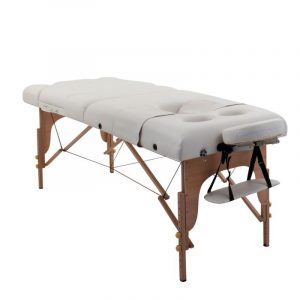
Postpartum
Recovery and Self-Care
After childbirth, your body needs time and support to recover. A massage helps relieve tension in the back, shoulders, and neck, supports hormonal balance, and reduces fatigue caused by disrupted sleep patterns. It is a valuable form of self-care during this intense period.
After a vaginal birth, you can receive a massage from 4 weeks postpartum, and after a cesarean section, after at least 6 weeks.
Emotional and Physical Recovery
A Embodiment therapy treatment can also help with the processing of a miscarriage or abortion. It calms the nervous system, reduces feelings of emptiness, and helps restore trust in your body. Additionally, it supports hormonal balance and provides a moment of rest and comfort.
Grief
Period of Loss
Grief takes many forms – the loss of a loved one, a miscarriage, abortion, breakup, or other farewell can be emotionally, mentally, and physically overwhelming. Sadness, anger, guilt, fear, and difficulty concentrating are often accompanied by physical tensions, such as tight muscles, stomach pain, and reduced appetite.
Embodiment therapy helps to calm the nervous system, regulate emotions, and release tension. It offers comfort and supports you in consciously experiencing your feelings and blockages, allowing you to process your grief at your own pace.
A gentle, healing way to connect with yourself during a period of loss.
